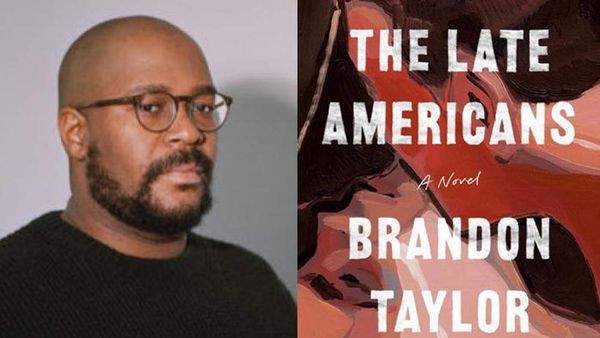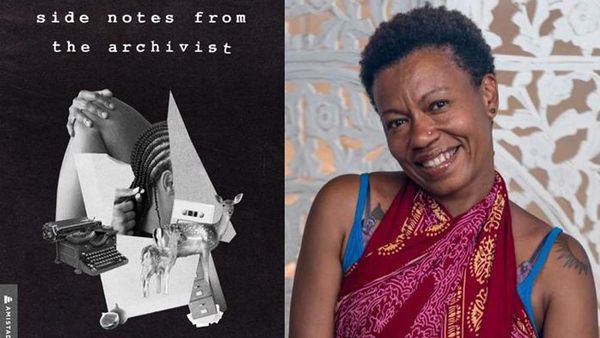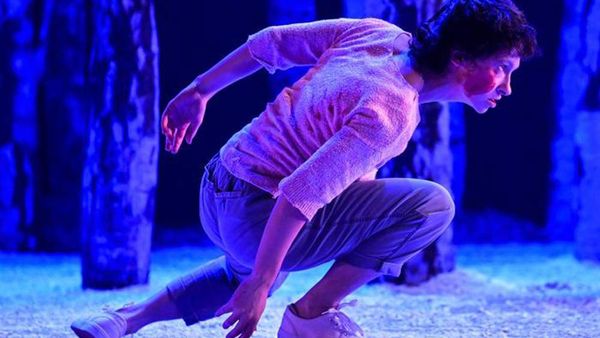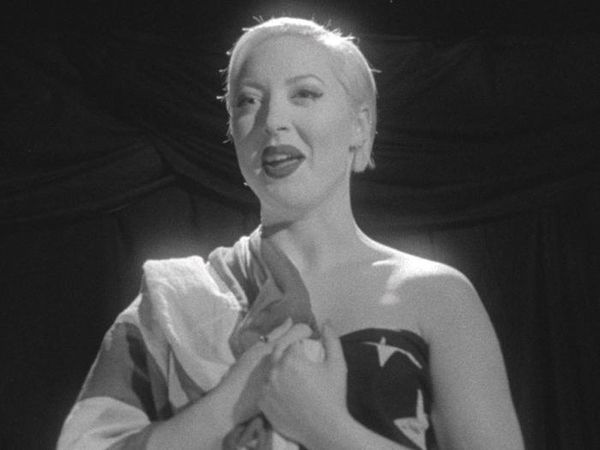
May 7, 2017
The Encounter
Richard Dodds READ TIME: 3 MIN.
Binaural sound, a term easily confused with stereo sound, creates an unnervingly realistic 360-degree audio experience. There were times during "The Encounter" at the Curran Theatre when I was ready to scowl at those I thought were talking behind me during the performance. Or I would jump when it seemed someone had surreptitiously sidled up next to me with something to say. Most of "The Encounter" takes place in the throbbing Amazon jungle, where the sonic theatrical opportunities are endless.
But there is a catch. Binaural sound can only be achieved by wearing headphones; no array of speakers can duplicate it. And so every seat in the Curran comes equipped with its own headset. Ever since Sony introduced the Walkman, we have become accustomed to masses moving among us in aural isolation, but the theater has always emphasized the communal experience. During "The Encounter" everyone is in an isolation booth of sorts, and while you may be hearing the same thing as your neighbors, you are also cut off from them. When a moment elicits a widespread laugh, it's something of a distant rumble that can easily be confused with the myriad of sound effects swirling around in our heads.
But, in fact, the central character in "The Encounter" finds himself in a vast isolation booth when he becomes lost in the Amazon jungle that the technological maneuvering accentuates. It is also, let's face it, something of a splendid gimmick, not unlike how Cinerama turned travelogues into cinematic events. Simon McBurney, who conceived, directed, and is the only performer in the Complicite production of "The Encounter," acknowledges as much at the start of the show, casually conversing with the audience about the technology, and giving us examples of its possibilities that include blowing into the ear of a mannequin-like binaural head that our senses tell us to feel as well as hear.
And then McBurney takes on the persona of Loren McIntyre, a veteran photographer for National Geographic, first demonstrating how a special microphone will turn his high English-accented voice into the deeply resonate American accent ascribed to McIntyre. In 1968, McIntyre set out to make contact with the elusive Mayoruna Indians living under the heavy canopy of an Amazon tributary. He succeeds only too well, essentially being forced on their mysterious relocations in their effort to turn back time after losing his way to a rendezvous point with his helicopter.
McIntyre talks in the first person about his various adventures and difficulties, the most pronounced being that the Mayoruna speak none of his default languages of English, Spanish, and Portuguese. Some of the tribesfolk seem open to his presence, others not so much, but the chief whom McIntyre nicknames Barnacle appears to be a welcoming presence. "Some of us are friends," McIntyre hears him say, though no words are spoken. McIntyre never discussed what he felt were telepathic communications until years later, after Romanian-born writer Petru Popescu convinced the photographer to share his experiences for the book "Amazon Beaming," which became a prime source for "The Encounter."
Using words and sounds, McBurney conjures vivid images of life in the jungle among a wary community that may have shut itself off from the outside world, but is still aware of that outside world's designs on their habitat for oil exploration and deforestation. McBurney, an accomplished performer in mainstream films and theater, takes the McIntyre character from moments of quiet introspection to unhinged mayhem across the stage. There are abrupt breaks in the jungle fever when McBurney's young daughter's voice periodically intrudes on the actor's home recording sessions with a request for a snack or a story, and McBurney gently accommodates her, before bringing us back to the intensity of the jungle.
These particular collisions of various realities may be briefly disorienting but are not confusing. But there are intervals of unintended confusion, especially when McBurney holds a small recording device to the microphone to play excerpts from various experts that can be hard to decipher - an oddly low-tech choice for a show with such a sophisticated sound design. But even though sound is the preeminent frill, the prosaic collection of desks, tables, and microphones is backed by a wall resembling acoustic baffling that can evocatively reflect changing light patterns and projections culminating in a torrential storm.
Perhaps the most effective moments are the most intimate. During a rainstorm, a young tribesman named Tuti invents a dance based on raindrops. What I actually saw, what I heard, and what was simply described have melded into a vivid memory of just a happy kid dancing in the rain.
"The Encounter" will run through May 7 at the Curran Theatre. Tickets are $49-$125, available at sfcurran.com






